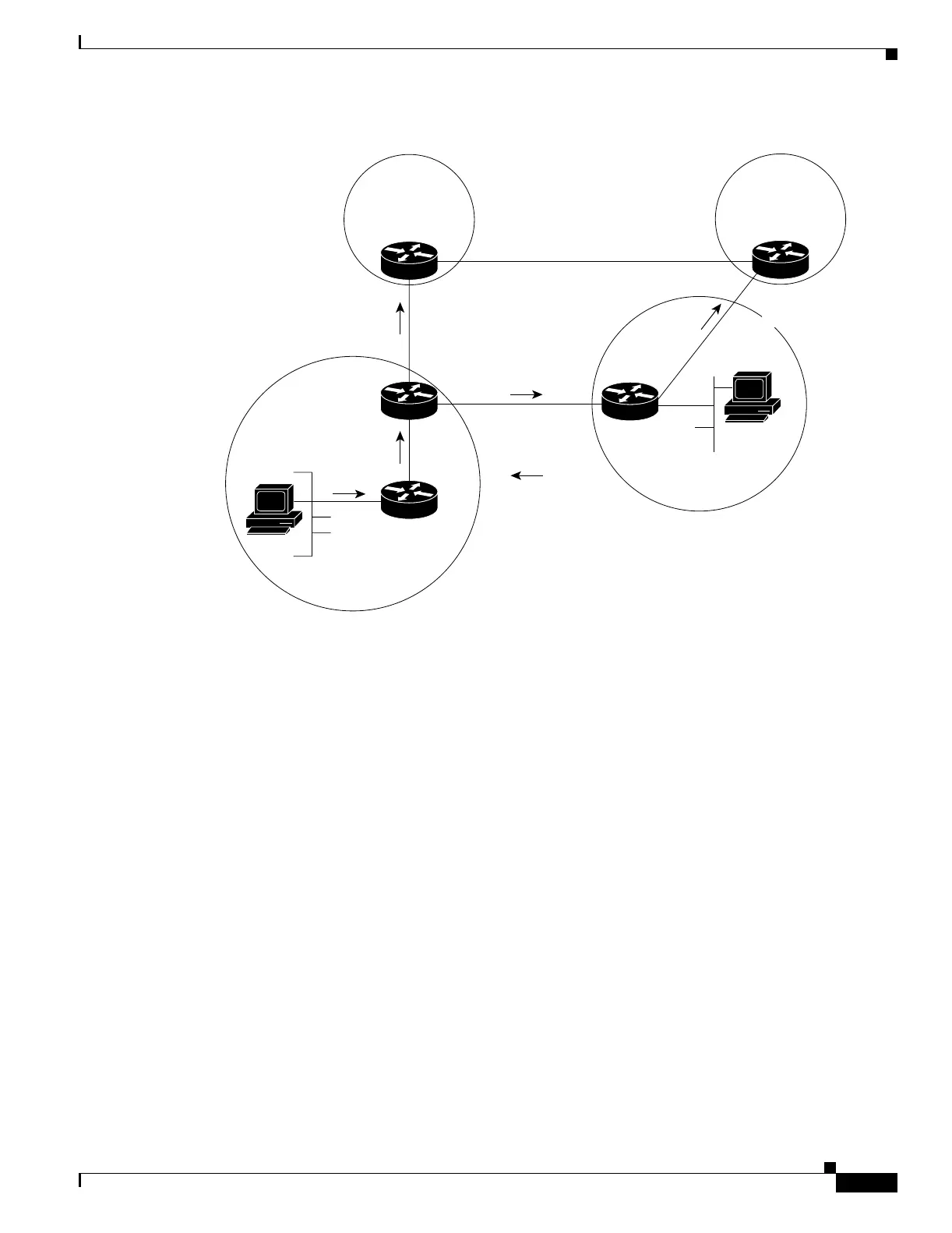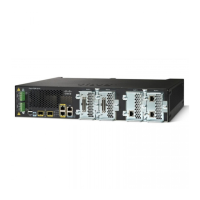35-3
Catalyst 3550 Multilayer Switch Software Configuration Guide
78-11194-09
Chapter 35 Configuring MSDP
Understanding MSDP
Figure 35-1 MSDP Running Between RP Peers
MSDP Benefits
MSDP has these benefits:
• It breaks up the shared multicast distribution tree. You can make the shared tree local to your
domain. Your local members join the local tree, and join messages for the shared tree never need to
leave your domain.
• PIM sparse-mode domains can rely only on their own RPs, decreasing reliance on RPs in another
domain. This increases security because you can prevent your sources from being known outside
your domain.
• Domains with only receivers can receive data without globally advertising group membership.
• Global source multicast routing table state is not required, saving memory.
MSDP peer
RP + MSDP peer
49885
Receiver
MSDP peer
MSDP SA
MSDP SA
MSDP SA
TCP connection
BGP
Source
Multicast
Register
Peer RPF flooding
PIM sparse-mode
domain
PIM
DR
(S,G) Join

